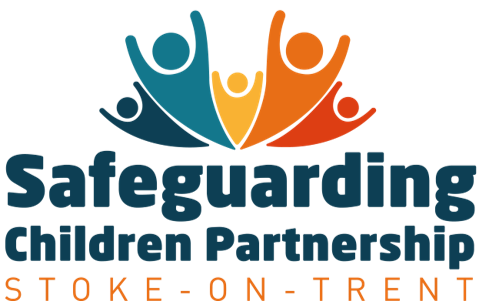Exploitation
Child Exploitation, including Child Sexual Exploitation
Child exploitation occurs where an individual or group takes advantage of an imbalance of power to coerce, manipulate or deceive a child or young person under the age of 18 into sexual or criminal activity in exchange for something the victim needs or wants, and/or for the financial advantage or increased status of the perpetrator or facilitator. (Working Together to Safeguard Children 2018).
Exploited children are victims of abuse. Children do not make informed choices to enter into or to remain in exploitative situations, and only do so through coercion, enticement, manipulation or desperation. Children may also exploit other children and this can often be because they have been exploited themselves or perpetuate harm as a result of being groomed/fear of coercion. It is critical that professionals are careful they do not adopt a blame approach.
Children who are being exploited or, who are at risk of being exploited, will have varying levels of needs. They may have multiple vulnerabilities and therefore an appropriate multi- agency response and effective coordination is essential to ensure the child safety. Abuse does not occur because of a child’s vulnerability, it occurs because there is someone willing to take advantage of this vulnerability and because there are inadequate protective structures around the child and family to mediate against this.
Child Criminal Exploitation is the exploitation of a child to engage in criminal activity for the gain of another adult. County Lines is a term used to describe organised criminal networks exporting illegal drugs into one or more importing areas (within the UK). This can take many forms, including shoplifting, theft, robbery violent crime, carrying weapons, drug running, or dealing drugs on behalf of adults. They use dedicated mobile phones in the ‘dealing lines’ and often use children and adults to move and store drugs and money through coercion, intimidation, violence, sexual violence and weapons. To read more about County Lines click on the links below:
Child Sexual Exploitation is a form of child sexual abuse. Child Sexual Exploitation can affect any child or young person (male or female) under the age of 18 years, including 16 and 17 year olds who can legally consent to have sex. Children may have been sexually exploited when the sexual activity appears consensual as exploitation can involve enticement-based methods of compliance and may not always be accompanied by violence or threats of violence; it may occur without the child or young person’s immediate knowledge (through others copying videos or images they have created and posting on social media, for example). The abuse can be a one-off occurrence or a series of incidents over time, and range from opportunistic to complex organised abuse. Child Sexual Exploitation can include physical contact (penetrative and non-penetrative acts) it does not always involve physical contact, can take place in person or via technology, or a combination of both.
A common feature of child exploitation is that the child does not recognise the coercive nature of the relationship and therefore does not see themselves as a victim of exploitation. Therefore, the importance of professional curiosity, empathy and persistence are required when working with children who may be at risk or experiencing exploitation. Read more about child sexual exploitation below:
- Child Sexual Exploitation Information (NSPCC)
- How to Spot Child Sexual Exploitation (NHS)
- Online Child Sexual Exploitation (and Child Sexual Abuse)
Below is the Stoke-on-Trent multi-agency practice guidance and the Risk Factor Matrix:
- Child Exploitation Practice Guidance
- Child Exploitation Risk Factor Matrix
- Referral Pathway for CSE and CCE
Children who go missing from home or care
Whenever a child goes missing for home or care it is important that partners know what they need to do to report the children as missing, and to ensure appropriate intervention is in place to reduce further incidents of missing. Whilst not every missing episode indicates that a child is at risk of harm, missing episodes are highly correlated to concerns a child might be vulnerable to being exploited and therefore every episode needs to be treated as urgent until the circumstances for the child have been determined.
The joint protocol for children missing from home or care contains information on the processes to be followed by the partnership in relation to missing children.
Assessment of Risk Outside the Home (Contextual Safeguarding)
Assessment of risk outside the home previously referred to as Contextual Safeguarding is an approach to understanding and responding to young people’s experiences of harm beyond their families. It recognises that the different relationships young people form in their neighbourhoods, schools and online can feature violence and abuse. These threats can take a variety of different forms and children can be vulnerable to multiple threats, including: exploitation by criminal gangs and organised crime groups such as county lines; trafficking; online abuse; teenage relationship abuse; sexual exploitation and the influences of extremism leading to radicalisation.
Parents and carers may have little influence over these contexts and young people’s experiences of extra familial abuse can undermine parent-child relationships. As individuals move from early childhood and into adolescence they spend greater amounts of time socialising independently of their families. During this time, peer relationships are increasingly influential; setting social norms and informing young people’s experiences, behaviours, choices and peer status. These relationships are shaped by, the school, neighbourhood and online contexts in which they develop.
The current child protection system and legislative/policy framework which underpins contextual safeguarding was designed to protect children and young people from risks posed by their families or situations where families have reduced capacity to safeguard those in their care. Assessment of risk outside the home supports the development of approaches which disrupt/change harmful extra familial contexts rather than move families/young people away from them. The approach extends the concept of ‘capacity to safeguard’ beyond families to those individuals and sectors who manage extra familial settings in which young people may encounter risk.





